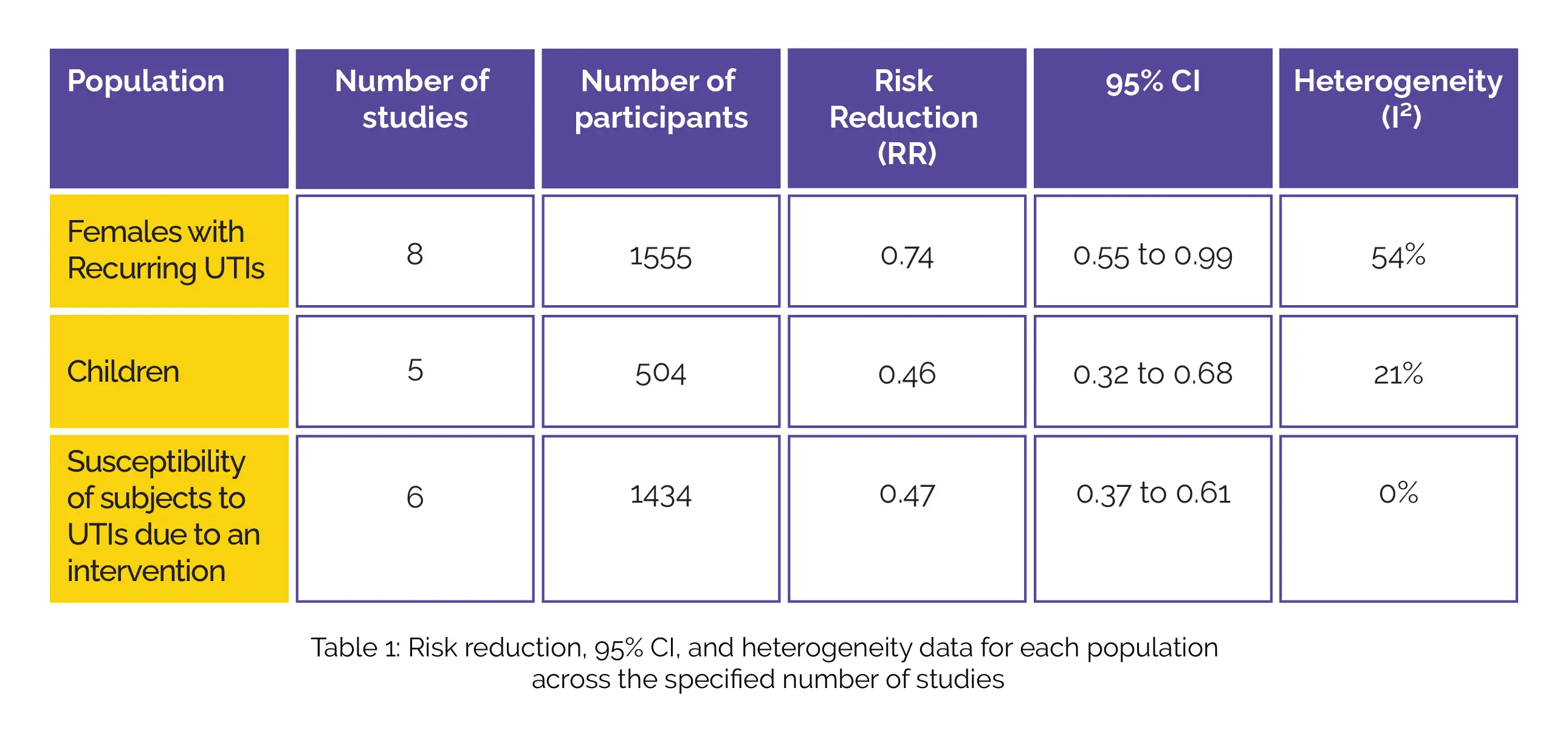Categories
Change Password!
Reset Password!


Women with recurrent UTIs, children, and those susceptible to UTIs post-bladder intervention can be recommended to use cranberry products in preventing symptomatic urinary tract bacterial infections.
A recent update in the Cochrane Library presented compelling evidence supporting the efficacy of cranberry products in lowering the risk of symptomatic urinary tract infections (UTIs). The review, encompassing a total of 50 studies and 8,857 participants, marks the fifth update since its initial publication in 1998.
Cranberries comprise proanthocyanidins (PACs) which have long been recognized for their ability to hamper the adherence of p-fimbriated Escherichia coli to the bladder lining. The latest findings affirm the benefits of cranberry products in specific populations but caution against their use in certain groups (elderly, people with bladder emptying problems or during pregnancy).
This Cochrane Review by Gabrielle Williams et al. examined the efficiency of cranberry products in avoiding UTIs in vulnerable groups. A search was conducted on the Transplant Specialised Register and Cochrane Kidney. To recognize randomized controlled trials (RCTs) or quasi-trials linked with cranberries and UTI prevention, the CENTRAL, EMBASE database, conference proceedings, MEDLINE, the International Clinical Trials Register Search Portal and ClinicalTrials.gov were explored. In 45 studies comparing cranberry products to either a placebo or no treatment within six participant groups, the analysis focused on 26 of these studies.
In cases where evidence certainty was moderate, it was found that cranberry products decreased the overall risk of UTIs (6211 participants: Risk Ratio [RR] 0.70, 95% confidence interval [CI] 0.58 to 0.84; I² = 69%). When examining specific participant groups, cranberry products were likely to reduce the risk of UTIs as shown below (Table 1):

However, in cases of low certainty, there might be little or no advantage for aged, pregnant women, and adults with neuromuscular dysfunction of the bladder and incomplete bladder emptying. Additional comparisons included cranberry products with probiotics in 3 studies, cranberry tablets with cranberry liquid in one study, and various dosages of PACs in 2 studies. Furthermore, 6 studies compared cranberry products with antibiotic agents. It was found that:
Gastrointestinal side effects were probably similar for those using cranberry products or obtaining no treatment; therapy compliance wasn't clearly connected to recurrent UTI risk, and there was no change in UTI risk for low, moderate, or high doses of PACs. Further investigation is necessary to comprehend the nuances of compliance and dosages. Hence, the data endorse the usage of cranberry products for decreasing the risk of symptomatic, culture-verified UTIs in females having recurrent UTIs, in children, and in individuals prone to UTIs post-interventions. However, the current evidence does not promote their usage in the elderly, pregnant females, or those having bladder emptying problems.
Cochrane Library
Cranberries for preventing urinary tract infections
Gabrielle Williams et al.
Comments (0)